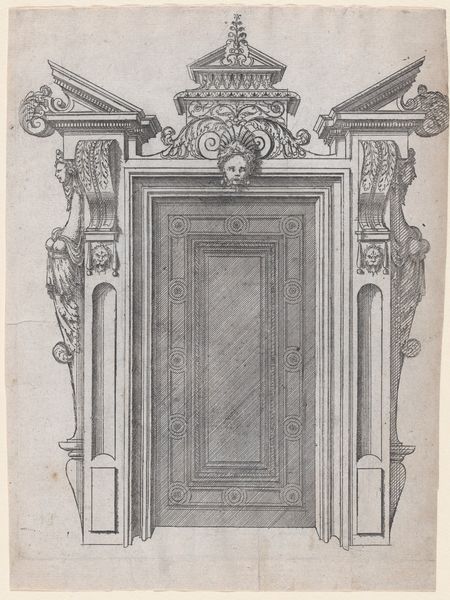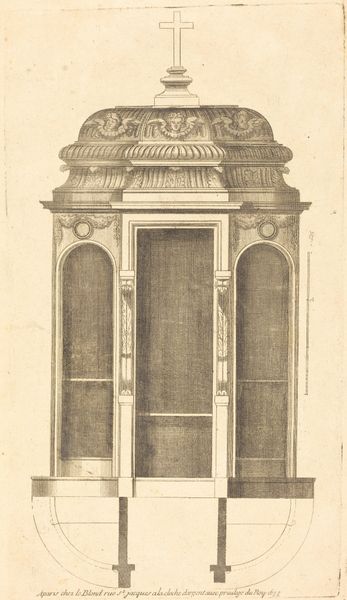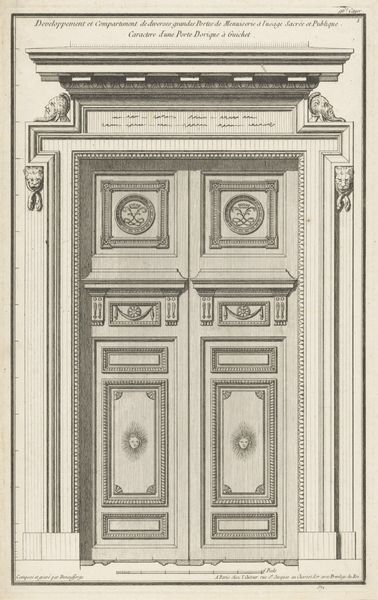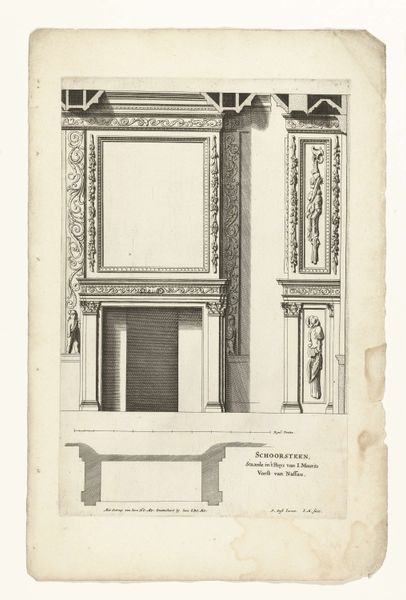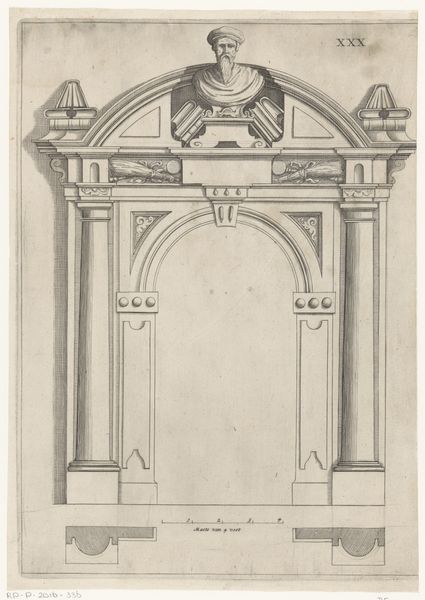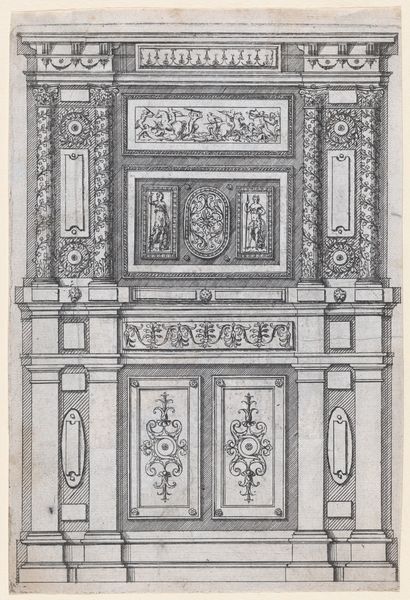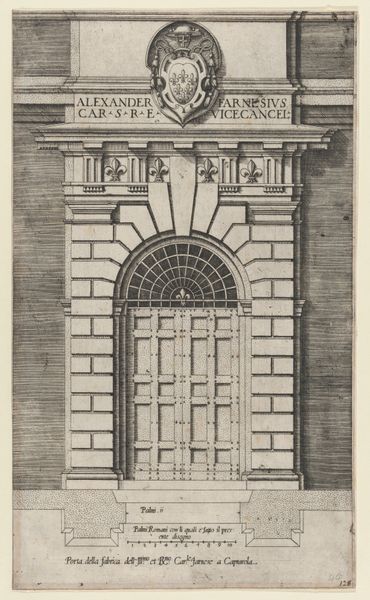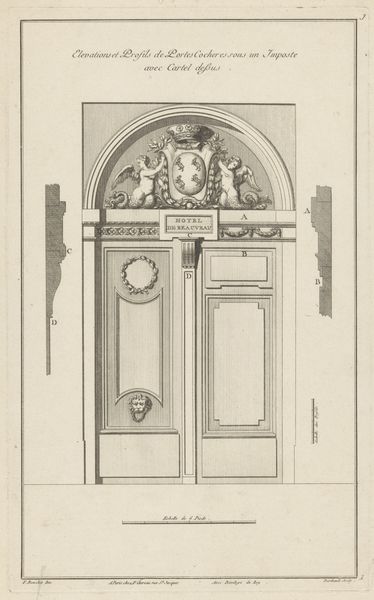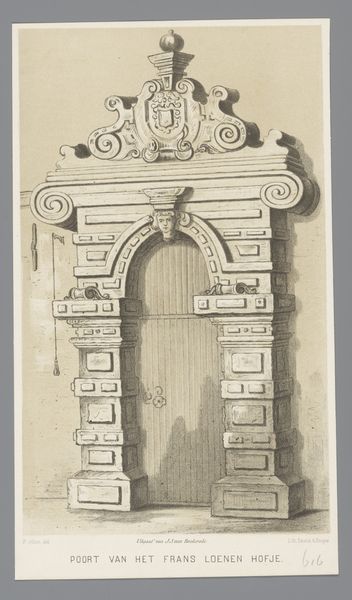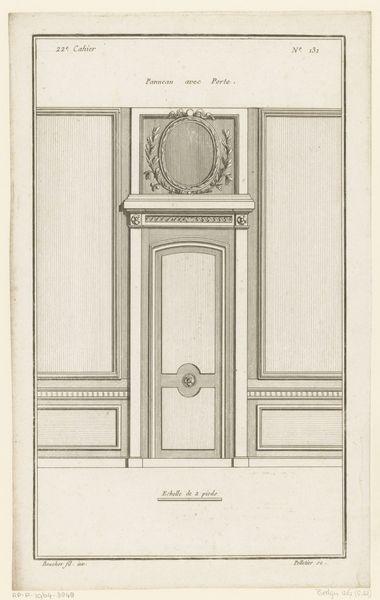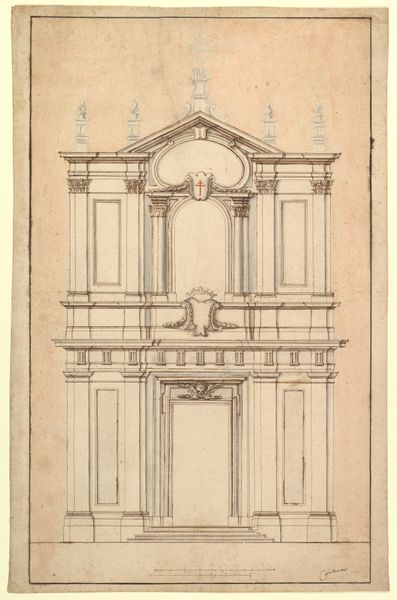
drawing, print
#
drawing
#
aged paper
#
toned paper
#
light pencil work
#
quirky sketch
# print
#
pencil sketch
#
old engraving style
#
sketch book
#
personal sketchbook
#
pen-ink sketch
#
pen work
Dimensions: Sheet: 9 1/16 × 5 7/8 in. (23 × 14.9 cm)
Copyright: Public Domain
Editor: Here we have Jacques Androuet Du Cerceau's "Design for a Door Frame" from 1565-1570, a drawing, almost print-like in its detail, housed at the Metropolitan Museum of Art. It feels quite imposing and very architectural. How do you interpret this work from a historical point of view? Curator: This drawing offers a fascinating insight into the aspirations of 16th-century elite society. It's not just a door; it's a statement of power and status. Consider the socio-political context: France was grappling with religious wars, and the aristocracy sought ways to assert their authority and cultivate the arts, so a grand architectural design would become the way. How do you see that playing out in the design itself? Editor: Well, there's definitely a Roman influence in those classical columns and that triangular pediment. Curator: Exactly! The conscious borrowing from classical antiquity was a visual signal, associating the patron with the grandeur and legitimacy of the Roman Empire. And that elaborate decoration above the door--angels, foliage--speaks to wealth and refinement. Remember that access and control were a function of that. Doors controlled and limited visibility and passage, allowing those in charge to impose their socio-political status upon guests and onlookers. Editor: So it’s less about the function of a door, and more about projecting an image. Curator: Precisely. Think of the symbolic value: Who could pass through this doorway? What messages are being conveyed about power, taste, and belonging? Consider how this design, if realized, would shape social interactions within that space. Editor: I see that. So it really speaks volumes about the power structures of the time, something I hadn't considered at first glance. It’s a door that screams social hierarchy! Curator: Absolutely, and understanding those power dynamics allows us to appreciate this drawing on a much deeper level. It’s a window into the cultural values of 16th-century France.
Comments
No comments
Be the first to comment and join the conversation on the ultimate creative platform.
